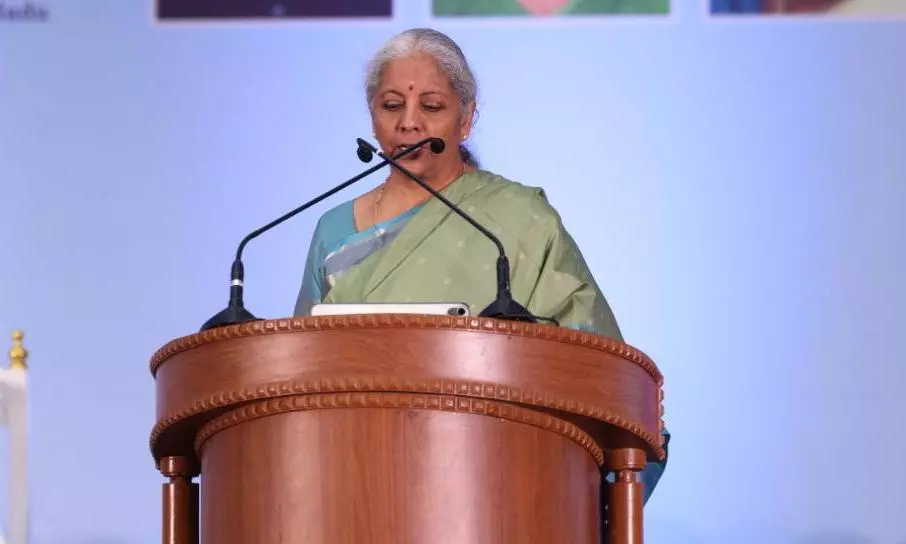
GST 2.0 'people's reform', touches all 140 crore Indians: FM Sitharaman
Nirmala Sitharaman said the reform – the single biggest since the 2017 rollout of the one-nation, one tax regime – has been carried out with a focus on the common man

Union Finance Minister Nirmala Sitharaman, on Saturday (September 6), called GST 2.0 a 'people's reform' and said that it would benefit every family, boost consumption, and bolster the economy.
In an interview with PTI, Sitharaman said that she will personally monitor passing on of goods and services tax (GST) rate cuts in the form of price reduction, but hastened to add that the industry has shown positivity towards such cuts.
Within days of the decision, from car makers to public sector insurance companies and shoe and apparel brands have already announced significant price cuts, and the rest are likely to follow suit by the time new GST rates are implemented, she said.
Nearly 400 products - from soaps to cars, shampoos to tractors and air conditioners - will cost less when modified GST is effective from the first day of Navaratri on September 22.
Premium paid on individual health and life insurance will be tax-free. A third slab of 40 per cent has been earmarked for a small list of sin goods and ultra-luxury items.
Also Read: GST 2.0 in bullet points: All you need to know about new tax reforms
'No individual untouched by GST'
"This is a reform which touches the lives of all 140 crore people. No individual in this country is untouched by GST. The poorest of the poor also have something small that they buy, touched by GST," she said.
Starting September 22, the GST slab structure will change - 5 per cent for common use goods and 18 per cent for everything else. The existing slab of 12 and 28 per cent rates have been done away with.
In the revamped GST structure, most daily food and grocery items will fall under the 5 per cent GST slab while bread, milk and paneer will attract no tax at all.
Sitharaman said the reform – the single biggest since the 2017 rollout of the one-nation, one tax regime – has been carried out with a focus on the common man. Every tax on daily use items has gone through a rigorous review, and in most cases, the rates have come down drastically.
The significant relief was the income tax announcement that she made in her Budget in February this year. Reportedly, the announcement left more money in the hands of common people; the GST rejig will allow for greater spending, making things more affordable.
"People do understand, for example, Rs 100 with which they go to the shop to buy something. Today, for the same Rs 100, they can buy one and a half units of the commodity. Earlier, they bought one," she said.
Also Read: Will the GST rejig revive consumption and boost growth?
Monthly household bills to be reduced
So this rate reduction is expected to bring down monthly household ration and medical bills, as well as help aspirational buying like upgrading from a car, replacing white goods like a refrigerator or washing machine.
"There is not going to be one family which is going to be without this positive impact of the GST touching them... 140 crore people are going to benefit from this in one way or the other. So this will boost consumption, and as a result, I think the virtuous cycle will start," she said.
Asked about the monitoring mechanism for ensuring passing on of the GST rate cut benefit, Sitharaman said the ministry has been talking with industry and trade.
"They've all come out openly to say we will pass this on. So, I can see the positivity from industry and trade. I'm very confident they will pass it on," she emphasised.
"I have said from September 22 my main focus in my job would be to watch out and see if it is getting passed on and where it is not getting passed on. I will engage with industry and say that they have to."
Also Read: GST cut: MPs will monitor if benefits are passed on to customers
Inflation is already under control
On inflation, she said that it is already well under control. This cut in the GST will actually bring people out to consume more. "There is no doubt about it."
The Finance Minister highlighted that the reforms go far beyond rate cuts. They also focus on making it easier for businesses - especially small and medium enterprises - to operate.
Simplified compliance norms, faster refunds, and easier registration are part of the reform package, she added.
Under the new framework, 90 per cent of refunds will be processed within a stipulated time, and companies will be able to register within three days.
The GST overhaul, she said, addresses confusion over the classification of products by bringing similar goods in the same tax bracket.
A classic example of simplification is popcorn. Popcorn mixed with salt and spice will attract five per cent tax, irrespective of whether it is sold loose or pre-packed. Earlier, salted popcorn, which was pre-packed, attracted a 12 per cent tax while caramel popcorn was taxed at 18 per cent.
Similarly, the GST on cream buns has been revised to five per cent from the earlier 18 per cent.
Earlier, there was confusion on cream buns as they were taxed 18 per cent, but buns and cream were separately taxed at 5 per cent. All these confusions have been sorted out in the overhaul.
Also Read: With popcorn and cream buns lost in GST maze, experts look for logic
(With agency inputs)

